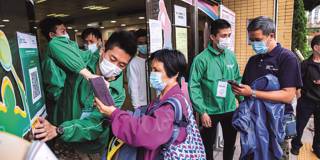
A Hybrid Strategy Against Pandemics
In the absence of multilateral or national-level leadership early in the pandemic, social entrepreneurs, academics, and non-profits stepped in to provide decision-makers with the information they needed to protect the public. This new hybrid approach to public health should now be fully realized.
BOSTON – Even before the pandemic, global health systems were overextended, data-poor, and buckling under increasing demand. It is thus little wonder that, despite the best intentions of medical professionals, many governments struggled to respond effectively to the COVID-19 crisis.